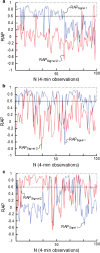Measuring intracranial pressure by invasive, less invasive or non-invasive means: limitations and avenues for improvement
- PMID: 32375853
- PMCID: PMC7201553
- DOI: 10.1186/s12987-020-00195-3
Measuring intracranial pressure by invasive, less invasive or non-invasive means: limitations and avenues for improvement
Abstract
Sixty years have passed since neurosurgeon Nils Lundberg presented his thesis about intracranial pressure (ICP) monitoring, which represents a milestone for its clinical introduction. Monitoring of ICP has since become a clinical routine worldwide, and today represents a cornerstone in surveillance of patients with acute brain injury or disease, and a diagnostic of individuals with chronic neurological disease. There is, however, controversy regarding indications, clinical usefulness and the clinical role of the various ICP scores. In this paper, we critically review limitations and weaknesses with the current ICP measurement approaches for invasive, less invasive and non-invasive ICP monitoring. While risk related to the invasiveness of ICP monitoring is extensively covered in the literature, we highlight other limitations in current ICP measurement technologies, including limited ICP source signal quality control, shifts and drifts in zero pressure reference level, affecting mean ICP scores and mean ICP-derived indices. Control of the quality of the ICP source signal is particularly important for non-invasive and less invasive ICP measurements. We conclude that we need more focus on mitigation of the current limitations of today's ICP modalities if we are to improve the clinical utility of ICP monitoring.
Keywords: Intracranial pressure; Miniature pressure sensors; Non-invasive ICP; Pulsatile ICP; Static ICP.
Conflict of interest statement
Both the authors declares that they have no competing of interests.
Figures











References
-
- Le Roux P, Menon DK, Citerio G, Vespa P, Bader MK, Brophy GM, Diringer MN, Stocchetti N, Videtta W, Armonda R. Consensus summary statement of the international multidisciplinary consensus conference on multimodality monitoring in neurocritical care. Neurocrit Care. 2014;21:1–26. doi: 10.1007/s12028-014-0041-5. - DOI - PMC - PubMed
Publication types
MeSH terms
Grants and funding
LinkOut - more resources
Full Text Sources
Medical

